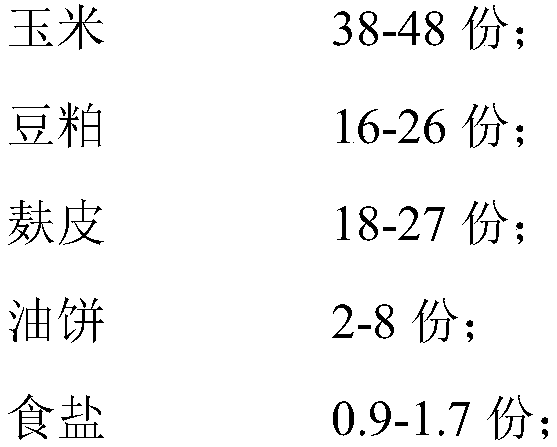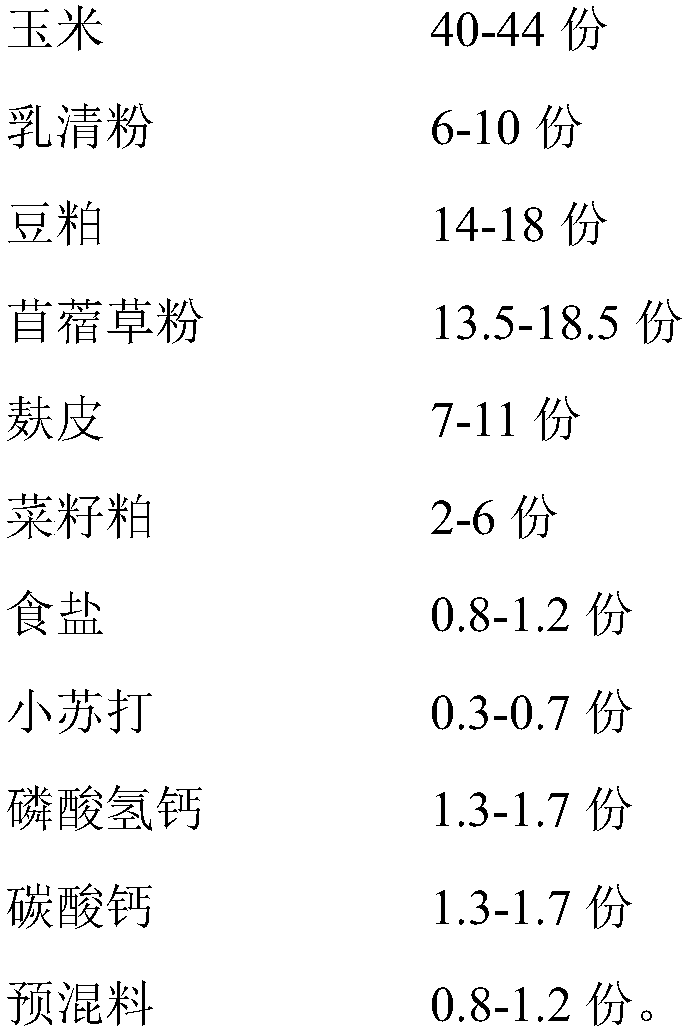Yak reproductive capacity improvement method
A technology of fecundity and yak, applied in the field of animal husbandry and breeding, can solve the problems of yak's smaller physique, high mortality rate, low reproduction rate, etc., and achieve the effect of improving reproductive performance
- Summary
- Abstract
- Description
- Claims
- Application Information
AI Technical Summary
Problems solved by technology
Method used
Image
Examples
Embodiment 1
[0056] Embodiment 1 female yak concentrated feed
[0057]Use corn, soybean meal, bran, oil cake, salt, premix, calcium hydrogen phosphate, calcium carbonate, yeast, and alfalfa grass as feed formula, by weight, the proportioning of above-mentioned composition is 42 parts of corn, 18 parts of soybean meal , 23 parts of bran, 5 parts of oil cake, 1 part of salt, 1 part of premix, 1.5 parts of calcium hydrogen phosphate, 1.5 parts of calcium carbonate, 2 parts of yeast, 5 parts of alfalfa.
Embodiment 2
[0058] Embodiment 2 female yak concentrated feed
[0059] Use corn, soybean meal, bran, oil cake, salt, premix, calcium hydrogen phosphate, calcium carbonate, yeast, and alfalfa grass as feed formula, by weight, the ratio of the above ingredients is 40 parts of corn, 20 parts of soybean meal , 21 parts of bran, 3 parts of oil cake, 0.8 parts of salt, 1.1 parts of premix, 1.3 parts of calcium hydrogen phosphate, 1.7 parts of calcium carbonate, 1.8 parts of yeast, 5.4 parts of alfalfa.
Embodiment 3
[0060] Embodiment 3 female yak concentrated feed
[0061] Use corn, soybean meal, bran, oil cake, salt, premix, calcium hydrogen phosphate, calcium carbonate, yeast, and alfalfa grass as the feed formula, in parts by weight, the proportioning of the above ingredients is 44 parts of corn, 16 parts of soybean meal , 25 parts of bran, 7 parts of oil cake, 1.2 parts of salt, 0.9 parts of premix, 1.7 parts of calcium hydrogen phosphate, 1.3 parts of calcium carbonate, 2.2 parts of yeast, 4.8 parts of alfalfa.
PUM
 Login to View More
Login to View More Abstract
Description
Claims
Application Information
 Login to View More
Login to View More - R&D
- Intellectual Property
- Life Sciences
- Materials
- Tech Scout
- Unparalleled Data Quality
- Higher Quality Content
- 60% Fewer Hallucinations
Browse by: Latest US Patents, China's latest patents, Technical Efficacy Thesaurus, Application Domain, Technology Topic, Popular Technical Reports.
© 2025 PatSnap. All rights reserved.Legal|Privacy policy|Modern Slavery Act Transparency Statement|Sitemap|About US| Contact US: help@patsnap.com



